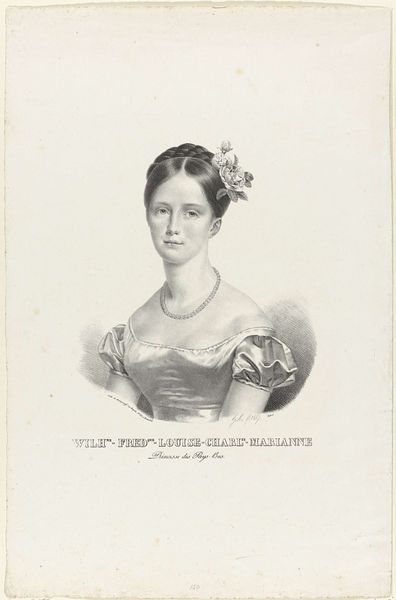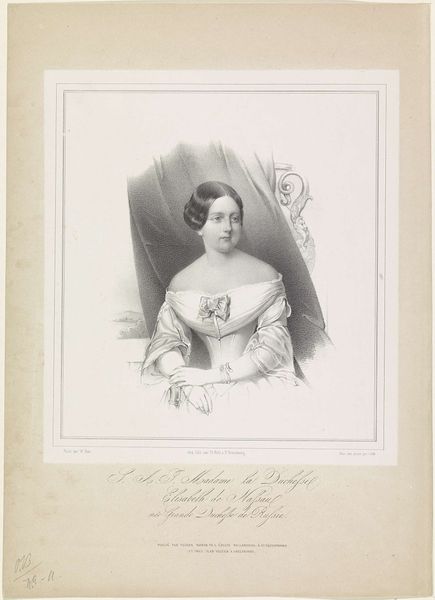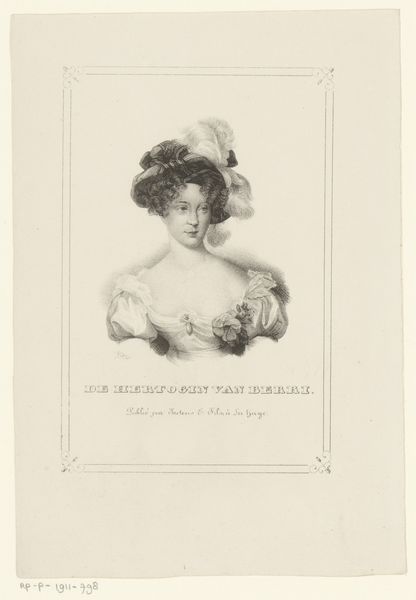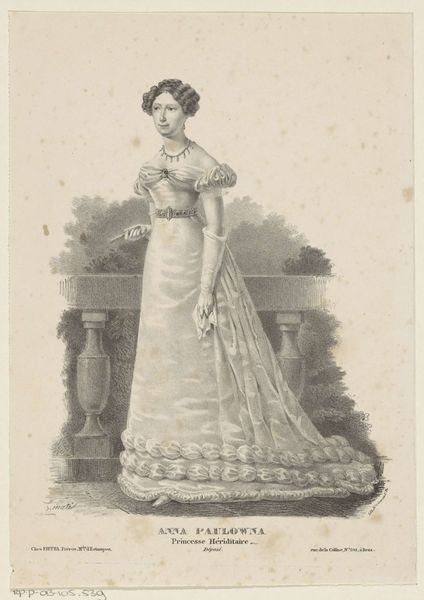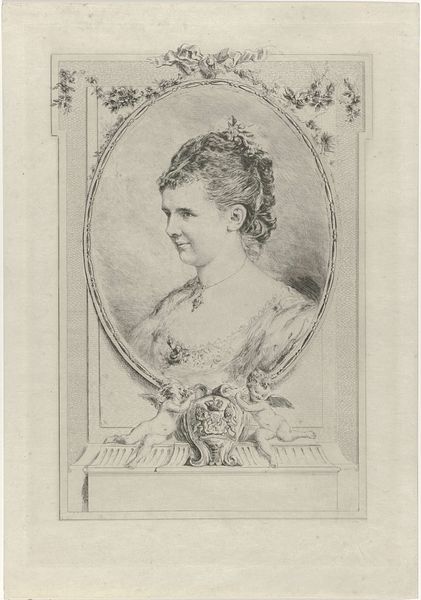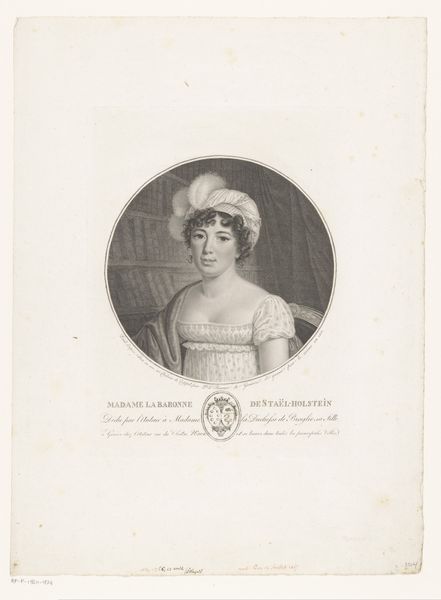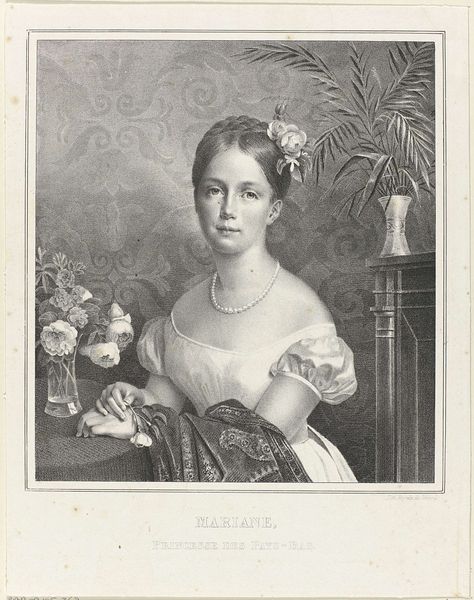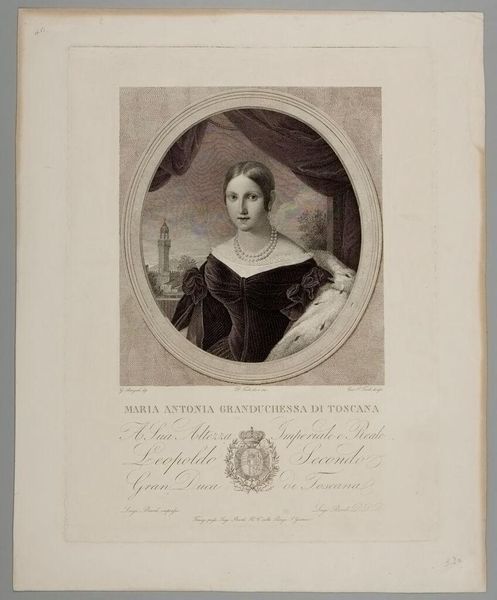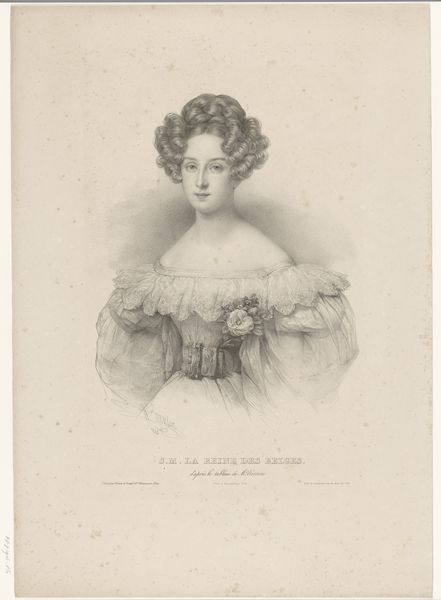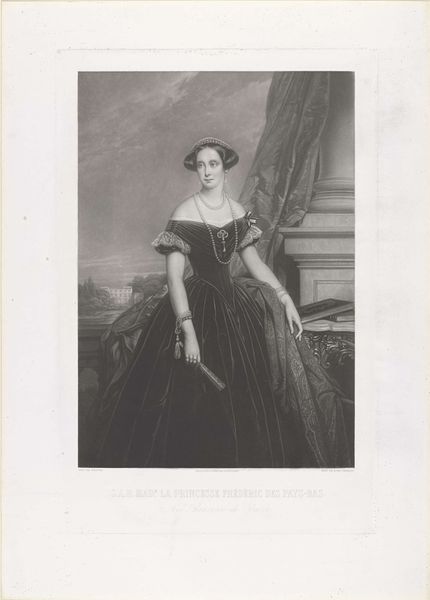
Dimensions: height 588 mm, width 438 mm
Copyright: Rijks Museum: Open Domain
This portrait of Anna Paulowna Romanowa was made by François Magneé, using lithography. This printmaking technique relies on the chemical repulsion of oil and water. The process begins with a smooth stone or metal plate, drawn on with a greasy crayon. The stone is then treated with acid, etching everything but the drawn image. When inked, only the greasy areas attract the ink, which is then transferred to paper. The texture and detail achieved through lithography lent itself well to portraiture. Here, the velvety blacks and subtle gradations convey the luxurious fabrics of Anna’s gown and the sheen of her jewelry. It also evokes the soft, diffused light typical of paintings. The rise of lithography in the 19th century democratized image production, making art more accessible and accelerating the spread of visual culture. The level of detail in the lithography allowed those of lesser means the opportunity to own a portrait of nobility. This reminds us that art is not just about the image, but about the means of its making, and its place in a wider social and economic context.
Comments
No comments
Be the first to comment and join the conversation on the ultimate creative platform.
